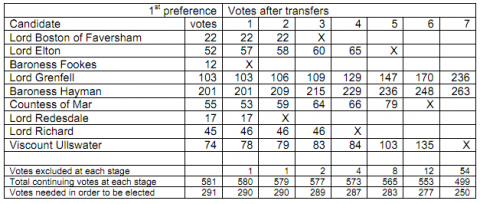Explaining the AV electoral system
Overview
On 5th of May 2011 a UK wide referendum will ask voters: 'Do you want the United Kingdom to adopt the 'alternative vote' system instead of the current 'first past the post' system for electing Members of Parliament to the House of Commons?'
Voters will be asked to answer YES or NO.
The outcome of the referendum will be determined by a simple majority, and there will be no minimum turnout threshold required for a YES vote to be passed.
Join 72,953 people who trust us to check the facts
Sign up to get weekly updates on politics, immigration, health and more.
Subscribe to weekly email newsletters from Full Fact for updates on politics, immigration, health and more. Our fact checks are free to read but not to produce, so you will also get occasional emails about fundraising and other ways you can help. You can unsubscribe at any time. For more information about how we use your data see our Privacy Policy.
What will voters have to do at the ballot box?
Under the current system of First Past the Post, voters mark an X by their favoured candidate and party.
Under a system of AV, instead of putting an X next to your preferred candidate, you put the number 1 by their name. You can then go on to put 2 by the name of your next favourite candidate and so on as far as you want to go, or until you have put numbers against all the candidates on the ballot.
Whether or not you rank any more candidates than your number 1 choice is optional.
Under AV how is the winner determined?
With the current First Past the Post system, the winner is the candidate who has the most votes. All the winner needs is one more vote then their closest rival.
Under the AV system proposed by the government, candidates will only win in the first count if they get more than half of the number 1 votes cast in their constituency.
If no candidate does get more than half, then the candidate with the fewest number 1 votes is eliminated from the counting. The votes for the eliminated candidate then have their number 2 preferred candidate counted. If there is no number 2 preference, the ballot paper is no longer counted.
This process of eliminating the candidate with the fewest votes, and re-apportioning their next preference votes to the remaining candidates continues until one of the candidates gets more than half of the votes in a count.
When a candidate does get more than half of the votes in a count, they are declared the winner.
An example
To give an example from a past Full Fact factcheck, the House of Lords election shown below shows how their can be seven separate rounds of counting before a candidate gets more than half of the votes.

In each round a candidate is eliminated and their next preference votes are re-apportioned to the remaining candidates.
Details of the AV system
A detailed account of the AV bill passed by Parliament, and the AV system that it proposes is published in a briefing paper produced by The Constitution Society, on behalf of the all-party parliamentary group on the constitution.
